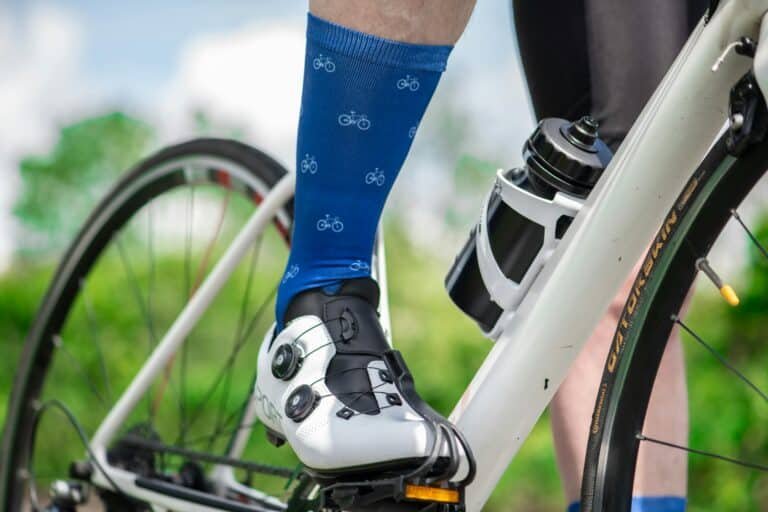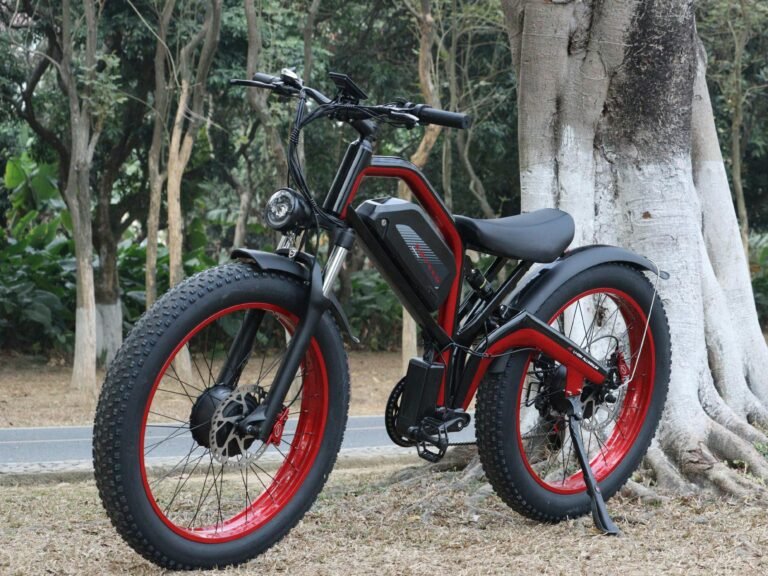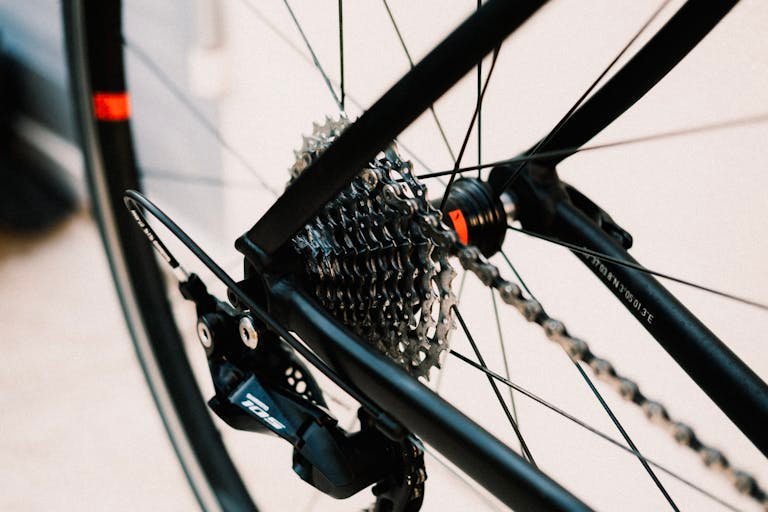How To Travel With Your Bike: 2024 Guide to Using a Bike Box
Thinking about how to travel with your bike? A bike box is your best friend! Whether you’re a professional cyclist or a weekend warrior, ensuring your bike arrives safely at its destination is crucial. With airline baggage handlers and bumpy roads to contend with, protecting your bike can feel overwhelming.
But fear not—we’ve got you covered. In this guide, we’ll break down everything you need to know about bike boxes, from choosing the right type to packing your bike for maximum protection. By the end, you’ll be ready to travel with confidence and keep your two-wheeled pride and joy safe!
What Is a Bike Box and Why Do You Need One?
Let me start with the basics: a bike box is a protective container designed specifically to transport bicycles safely. Think of it as a suitcase for your bike but with a lot more padding and thought put into it. Some bike boxes are made of sturdy cardboard, while others are crafted from hard-shell plastic or durable materials like polycarbonate. They typically include compartments or foam inserts to secure your bike frame, wheels, and accessories snugly during transit.
The primary purpose of a bike box is simple: to shield your precious ride from damage. Whether you’re traveling across the country or halfway around the world, you don’t want your bike arriving at your destination scratched, bent, or worse—broken beyond repair. Trust me, nothing kills the excitement of a cycling adventure faster than discovering your gear didn’t survive the journey.

When Do You Need a Bike Box?
So, when exactly do you need one of these boxes? If you’re someone who rarely takes your bike further than your local trail, you might not think about bike boxes at all. But they’re an absolute game-changer in a few specific scenarios:
- Airline Travel: Most airlines won’t let you just roll up with your bike as-is. They require it to be packed securely, and a bike box meets those requirements perfectly. Plus, it protects your bike from the rough handling that often happens with checked luggage.
- Relocations: Moving to a new city or even just across town? A bike box is ideal for keeping your bike safe in the back of a moving truck or storage unit.
- Shipping Your Bike: If you’re selling your bike or need to send it ahead to an event, like the Olympics a bike box ensures it arrives intact. Many courier services even offer discounts if your bike is packed properly in one.
- Bike Races or Tours: Traveling for a big event? A bike box lets you focus on the race or tour without worrying about how your bike is doing during transit.
Key Benefits of Using a Bike Box
Investing in a bike box comes with some serious perks, and it’s hard to imagine traveling with your bike without one.
- Protection: This one’s obvious, but it can’t be overstated. A good bike box keeps your frame, wheels, and delicate components safe from impacts, scratches, and weather.
- Convenience: Many bike boxes come with wheels, handles, or lightweight designs, making them easy to maneuver through busy airports or train stations.
- Peace of Mind: Knowing your bike is secure lets you focus on your trip instead of stressing about damages.
Now, a quick tip: if you don’t travel with your bike often, renting a bike box can save you money. Lots of bike shops rent cases for pretty cheap. But if you’re a frequent traveler, owning a high-quality box pays off in the long run.
At the end of the day, a bike box is more than just a container; it’s an investment in your bike’s longevity and your own sanity. Why risk your ride when a little preparation can keep it safe?
Types of Bike Boxes: Which One Is Right for You?
Choosing the right bike box can feel a bit overwhelming with all the options out there. Especially if you’re just starting out or are a beginner. But don’t worry—I’ve broken it down into three main types: hard-shell, soft-shell, and cardboard. Each comes with its own perks and trade-offs, so it really depends on how and where you’re traveling. Let’s jump in!
Hard-Shell Bike Boxes: Durability and Top Protection
If you’re the type who wants maximum protection for your bike, a hard-shell bike box is the way to go. Made from materials like ABS plastic or polycarbonate, the boxes are designed to withstand serious impacts. They’re the heavy-duty tanks of bike transport.
The rigid structure ensures your bike won’t get crushed, even under a pile of luggage. Most hard-shell boxes have padded interiors and specific compartments for wheels and accessories, keeping everything snug and secure.
The downside is they’re heavy and can take up quite a bit of storage space when not in use. Also, they can cost a pretty penny, with prices often ranging from $300 to $800.
Ideal for: Long-distance air travel, expensive bikes, and anyone who prioritizes protection over portability.

Soft-Shell Bike Boxes: Lightweight and Flexible
Soft-shell bike boxes offer a middle ground. They’re made of fabric with reinforced padding and often include internal frames to protect your bike’s critical components. While they don’t offer the same level of impact resistance as hard-shell boxes, they’re much lighter and easier to handle.
What I love about soft-shell boxes is how flexible they are. When empty, they can be folded down for easier storage. That said, you’ll need to be more cautious when packing—making sure everything is padded and secured—because they can’t handle heavy impacts as well.
Ideal for: Road trips, train travel, or short flights where baggage handlers aren’t too rough (wishful thinking, I know).
Cardboard Bike Boxes: Budget-Friendly Options
This is the go-to choice if you’re on a tight budget or need a one-time solution. Many bike shops or manufacturers provide these boxes, and they’re often free or available for a minimal cost. The only thing i would do before traveling by plane is remove or unscrew the rear derailleur hanger to avoid it from being bent, also lower your seat post or remove it and wrap your fork with thick clothing to avoid bumps or dents.
While cardboard boxes are surprisingly sturdy, they’re not weatherproof or reusable over the long term. Plus, they require careful packing and lots of tape. Don’t expect these to hold up to serious abuse, but for short trips or shipping a bike, they get the job done.
Ideal for: Budget-conscious travelers, shipping bikes, or one-off moves.

Comparison Chart: Features, Pros, and Cons
| Type | Durability | Weight | Cost | Storage | Best For |
| Hard-Shell | High | Heavy | $$$ | Bulky | Air travel, high-value bikes |
| Soft-Shell | Moderate | Lightweight | $$ | Compact | Road trips, moderate travel |
| Cardboard | Low | Very lightweight | $ | Disposable | Budget travel, short-term use |
When it comes down to it, the best bike box is the one that fits your needs. If you’re planning regular travel with a high-end bike, invest in a hard-shell or soft-shell option. For occasional trips, cardboard boxes are a wallet-friendly solution. Whichever you choose, just remember: packing your bike securely is just as important as the box you use!
How to Pack Your Bike in a Box: Step-by-Step Guide
Packing your bike in a box might seem intimidating, but with the right tools and a little patience, it’s totally doable. Whether you’re preparing for a flight, a move, or a shipping journey, the key is to pack your bike snugly to avoid damage. Here’s a step-by-step guide to make sure your bike arrives in one piece. Pack, pad and brace the bike well. Check each airline’s oversized luggage policy. Most are primarily concerned about the weight limitations if your over 50 lbs expect to pay a premium fee.
Tools and Materials You’ll Need
First things first, gather your packing essentials:
- Foam padding: To cushion your bike’s frame and components. Pool noodles work great too!
- Zip ties or Velcro straps: To secure loose parts like handlebars and pedals.
- Bike-specific tools: Allen keys, wrenches, and a torque wrench for safe disassembly.
- Wheel bags: If you have them, they’re a lifesaver for protecting your wheels.
- Bubble wrap or old towels: For wrapping delicate parts like the derailleur.
- Packing tape: Essential for sealing cardboard boxes.
- Marker: To label your box (and avoid “this side up” confusion).

Preparing Your Bike: Disassembly and Cleaning Tips
Before you even think about packing, give your bike a good cleaning. Trust me, you don’t want dirt and grime rubbing against your frame during transit—it’s like asking for scratches. You may also be inadvertently transporting micro creatures with you to and from.
- Remove the pedals: Use a wrench to unscrew them. Pro tip: the left pedal is reverse-threaded, so turn it clockwise to loosen.
- Take off the wheels: Detach both front and rear wheels, letting out a bit of air from the tires to prevent pressure changes from causing a blowout.
- Remove the handlebars: Loosen the bolts to detach the handlebars. Wrap them in bubble wrap or foam and secure them to the frame with zip ties.
- Lower or remove the seat post: This makes the bike more compact and prevents damage. Don’t forget to mark your seat post height with tape for easy reassembly!
- Protect the derailleur: Remove or wrap it securely in bubble wrap to keep it from bending.
Packing Techniques to Minimize Movement and Damage
Now comes the fun part—getting everything to fit like a game of Tetris. Start by placing the frame in the box, making sure it’s well-padded on all sides. Add foam or towels to prevent any part of the frame from touching the box directly.
- Wheels: Slide them into wheel bags if possible, or wrap them in bubble wrap and secure them alongside the frame.
- Small parts: Put pedals, skewers, and other bits into a bag and tape it to the inside of the box so they don’t rattle around. Ziploc works well here. Anything durable should be fine.
- Handlebars: Lay them flat against the frame and secure them tightly with zip ties or straps.
The key is to pack everything tightly so there’s no wiggle room. Use extra padding to fill gaps, especially around the frame and wheels.
Pro Tips for Securing Your Bike in Different Box Types
- Hard-shell boxes: Most come with straps or brackets. Use them! They’ll hold everything in place during bumpy rides.
- Soft-shell boxes: Be generous with foam padding, as the outer shell doesn’t offer as much impact protection.
- Cardboard boxes: Reinforce the edges with packing tape and label it “FRAGILE.”
Lastly, take a photo of your packed bike. If something goes wrong during transit, this can help with insurance claims.
Packing a bike might take a little extra effort, but the peace of mind you get knowing your bike is safe is so worth it. Plus, with practice, you’ll get it done in no time!
Top Bike Boxes in 2024: Reviews and Recommendations
Finding the right bike box can feel like hunting for the perfect piece of gear—there are tons of options, and each one has its pros and cons. Whether you’re after top-tier protection, lightweight convenience, or budget-friendly choices, this guide will help you navigate some of the best bike boxes of 2024. Keep an eye on Craigslist and FB marketplace, there may be good deals there as well.
Best Hard-Shell Bike Boxes
Hard-shell bike boxes are the gold standard for protection, ideal for high-value bikes or frequent travelers. Here are a couple of standout options this year:
1. Thule RoundTrip Transition
Thule consistently delivers quality, and the RoundTrip Transition is no exception. Made from durable ABS plastic, it features a built-in bike stand for easy packing and assembly. The interior padding and secure straps ensure your bike stays put during transit. At around $750, it’s an investment, but for frequent flyers, it’s worth it. I also have their bike rack carrier and it works every time.


2. B&W Bike Box II
This box is a tank—literally. With a rugged hard-shell exterior and customizable foam inserts, it offers top-tier protection. The wheels and handles make it surprisingly easy to maneuver, even when fully packed. Priced around $450, it’s slightly more affordable than the Thule but just as reliable.
Best Soft-Shell Bike Boxes
Soft-shell options balance protection with portability, making them great for trips where you’ll be handling your own luggage more.
1. Evoc Bike Travel Bag Pro
This bag is a favorite among cyclists for its lightweight yet protective design. It features reinforced panels in critical areas, plus wheel compartments to keep everything organized. At around $800, it’s pricier than other soft-shells, but the foldable design and versatility are worth it.


2. SciCon Aerocomfort 3.0
The Aerocomfort is perfect for road bikes and triathlon bikes, offering a blend of soft fabric and internal reinforcement. It’s incredibly lightweight and quick to pack. However, at $600, it’s one of the more expensive options in its category
Budget-Friendly Bike Boxes for Occasional Travelers
If you’re not traveling with your bike often, you don’t need to break the bank. Here are two great budget-friendly options:
- Trico Iron Case
At around $400, this hard-shell case offers decent protection without the hefty price tag. While it’s not as fancy as some premium models, it gets the job done for occasional travel. - Cardboard Bike Boxes
For one-off trips, cardboard boxes are a solid choice. Many bike shops will even give them to you for free. They’re lightweight and customizable, though they lack the durability of pricier options.
Reinforce the edges with tape to extend their lifespan.
What to Look For When Buying a Bike Box
When shopping for a bike box, keep these factors in mind to ensure it meets your needs:
- Size: Ensure the box fits your bike type—road, mountain, or triathlon—and any extra components like aero bars.
- Weight: Airlines often have weight limits for checked luggage, so choose a box that’s light enough to keep you under the limit once packed.
- Ease of Use: Features like wheels, handles, and internal straps can make a huge difference when you’re rushing through an airport.
- Storage: If space is tight at home, consider soft-shell options or foldable hard-shells that are easier to stow away.
With so many great bike boxes available in 2024, the perfect one is out there for your needs. Just match your choice to your travel habits and budget, and you’ll be ready to roll—literally!

Traveling With Your Bike Box: Tips and Tricks
Taking your bike on a trip can feel like a big deal, but with a little planning, you can make the process smooth and hassle-free. From navigating airline rules to handling your bike box with ease, here’s everything you need to know to travel confidently with your bike.
Renting a Bike Box: When and Why It Might Make Sense
If you only travel with your bike once in a blue moon, renting a bike box could save you money and storage space. Many bike shops and specialty retailers offer rental services for hard-shell and soft-shell boxes.
When Renting Makes Sense:
- One-off trips: If you’re not planning to travel often, renting eliminates the need to buy and store a box.
- Trying before buying: Renting lets you test different models to see which suits your needs before making an investment.
- Budget-conscious travel: Rental fees typically range from $50 to $100 per trip, which is much cheaper than buying a box outright.
However, availability can be a challenge during peak travel seasons, so book in advance to secure the box you want.
Navigating Airline Policies for Bike Boxes
Every airline has its own rules when it comes to bike boxes, and trust me, it’s worth doing your homework beforehand. Most airlines consider bikes as oversized or special baggage, and fees can range from $50 to over $200, depending on the carrier and destination.

Start by checking the dimensions and weight limits allowed for oversized luggage. Many bike boxes fit within the standard size requirements, but you’ll still need to make sure your packed box doesn’t exceed the weight limit, often 50 pounds.
Airlines like Delta and American Airlines are bike-friendly, while budget carriers may charge higher fees or have stricter rules.
Call ahead to confirm policies—even if it’s stated online. Policies can change, and some agents may interpret them differently. Also, don’t forget to label your bike box clearly with your name, phone number, and destination address.
Handling and Transporting Your Bike Box Efficiently
Let’s be honest: bike boxes can be bulky and heavy. But with a little strategy, you can maneuver them like a pro.
- Invest in wheels: If your bike box doesn’t already have built-in wheels, consider an upgrade. Hard-shell boxes often have durable wheels that make navigating airports much easier.
- Use luggage straps: A sturdy strap around your box gives you an extra handle and makes it easier to secure the box to a cart or trolley.
- Check-in early: Bike boxes take extra time to process, so arrive early to avoid delays at the counter. Some airlines require oversized luggage to be dropped off at a special desk.
- Get creative with transportation: For getting from the airport to your destination, taxis or ride-sharing services are often the easiest option. Just double-check that the vehicle can handle your bike box’s size. You may need an oversized Uber.
If you’re traveling solo, don’t hesitate to ask for help. Airport staff are generally happy to assist with oversized luggage.
How to Store Your Bike Box When Not in Use
Once your trip is over, you’ll need a plan for storing your bike box. This is especially important for hard-shell boxes, which can take up a lot of space.
- For hard-shell boxes: Find a spot in your garage, attic, or a closet where the box won’t get damaged. If the box has detachable wheels, remove them to save space. You can also use the interior of the box for storing bike gear like helmets or shoes.
- For soft-shell boxes: These are easier to store because they’re collapsible. Fold it flat and tuck it under a bed or on a high shelf. Just make sure it’s dry and clean before storing to avoid mildew.
- For cardboard boxes: If you plan to reuse the box, disassemble it and store it flat. Keep it in a dry place and reinforce the edges with tape if they’re starting to wear out.
Bonus Tip: Keep Travel Documents Handy
Always keep receipts, airline policies, and bike box weight info in your carry-on. If an airline questions your bike’s eligibility or tries to charge unexpected fees, having documentation can save you a lot of hassle.
Traveling with your bike box might seem like a challenge at first, but once you’ve done it a couple of times, it gets easier. With these tips, you’ll be able to focus less on planning and more on the adventure ahead.
Wrapping Up
Alternatives to bike boxes can be a smart choice depending on your travel habits, budget, and destination. Bike bags are perfect for lightweight travel and easy storage, while renting a box is ideal for occasional use.
Ultimately, it’s about matching the option to your needs. If protection and durability are top priorities, stick with a bike box or bag. But for a quick trip or a low-cost fix, alternatives can work in a pinch. Remember to check for deals on FB marketplace and Craigslist.
Bike boxes are an essential investment for anyone who travels with their bike. They protect your ride from damage, ensure convenience during transport, and give you peace of mind wherever your adventures take you. By understanding the different types of bike boxes and how to pack and travel with one, you can keep your bike safe and sound. Explore the best bike box options today and gear up for worry-free travels!
Engage, Endure and Enjoy! 🚴♀️
Find More Resources on Bicycles
- Smart Bike Trainers: 2024 Best Picks with Features and Benefits
- Mountain Biking for Beginners: Essential Guide to Hit the Trails in 2024
- 3 Best Mountain Bikes of 2024: Complete Buyer’s Guide & Reviews
- How Do You Adjust Bike Brakes? A Step-by-Step Guide for 2024
- Essential Mountain Bike Gear: A Complete Guide for 2024







